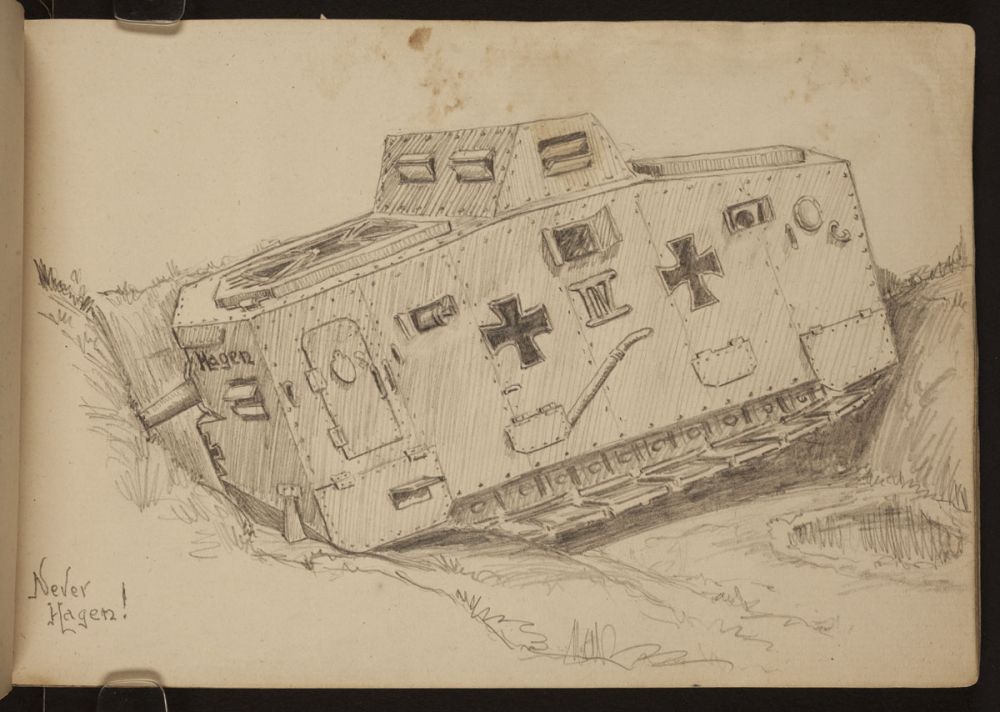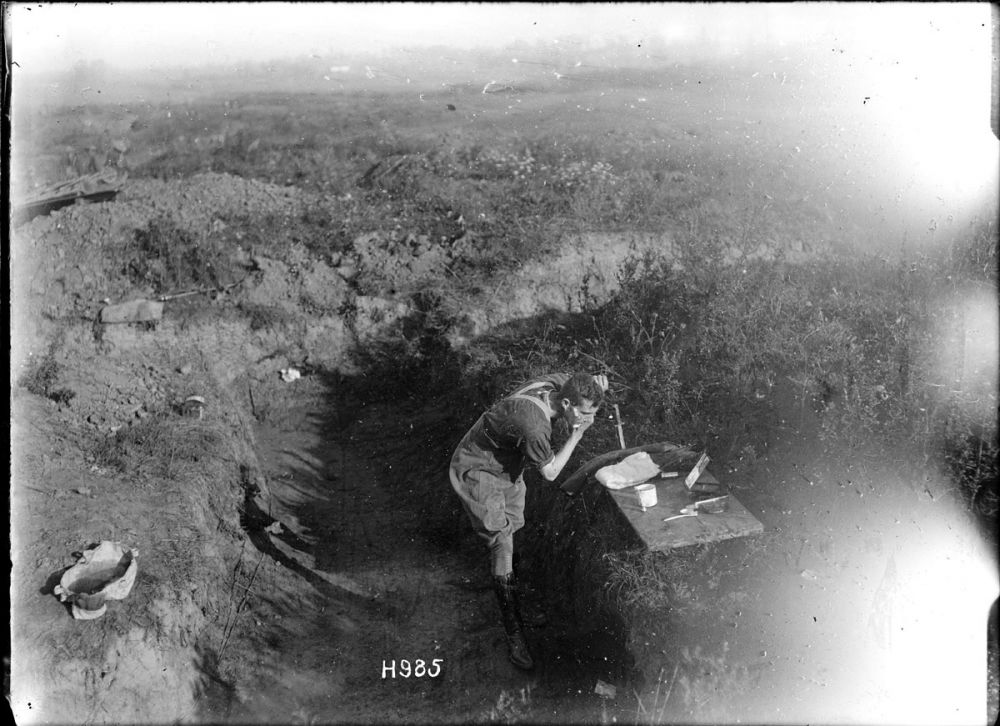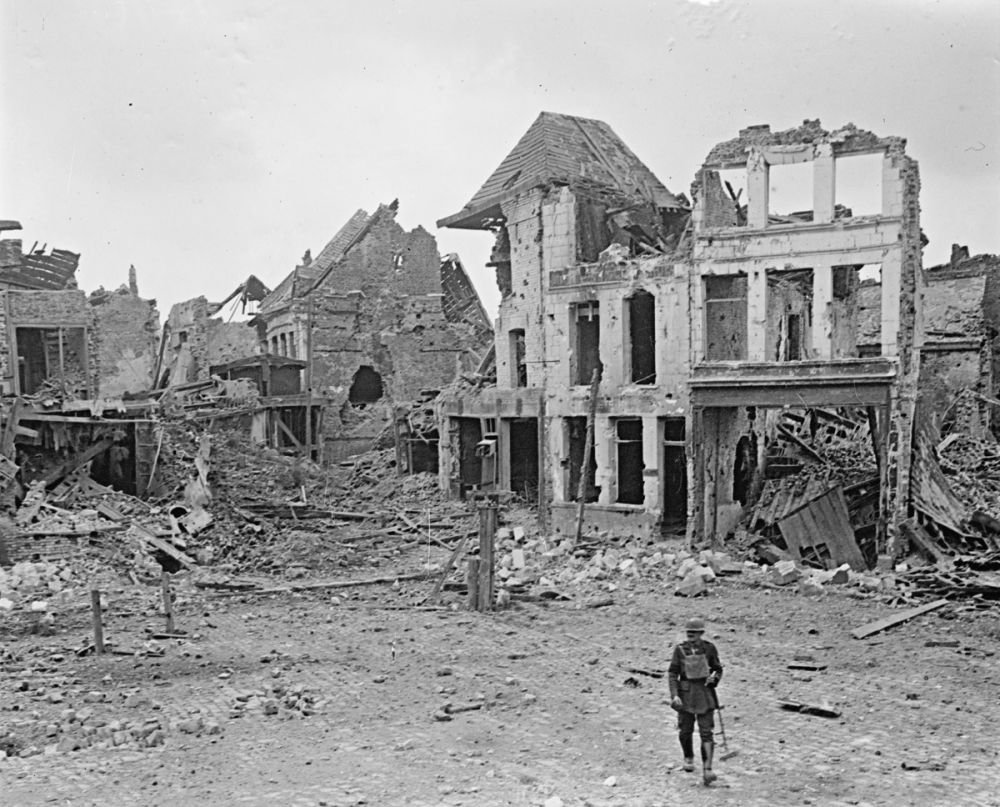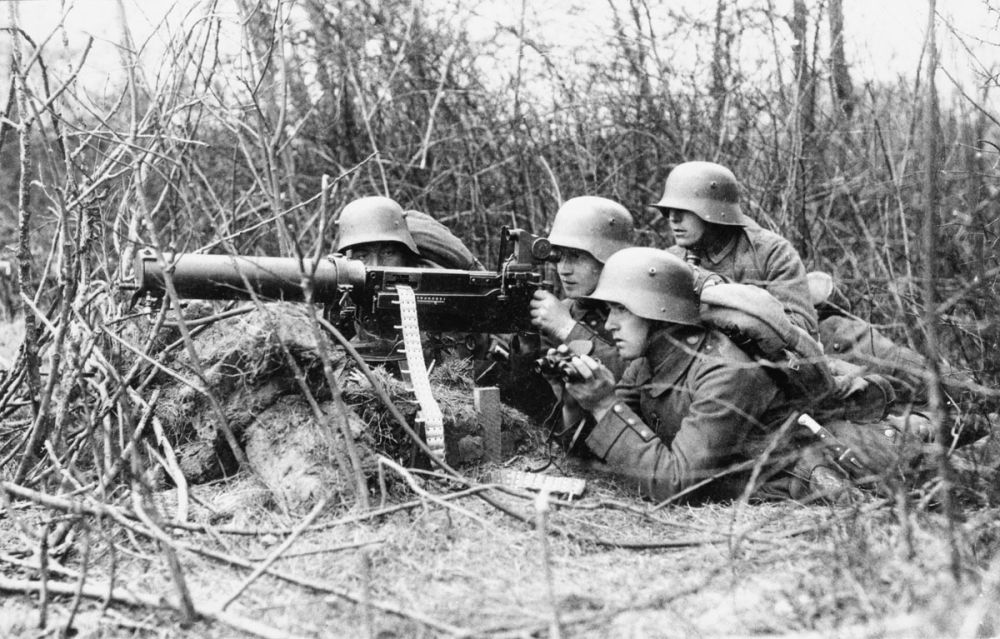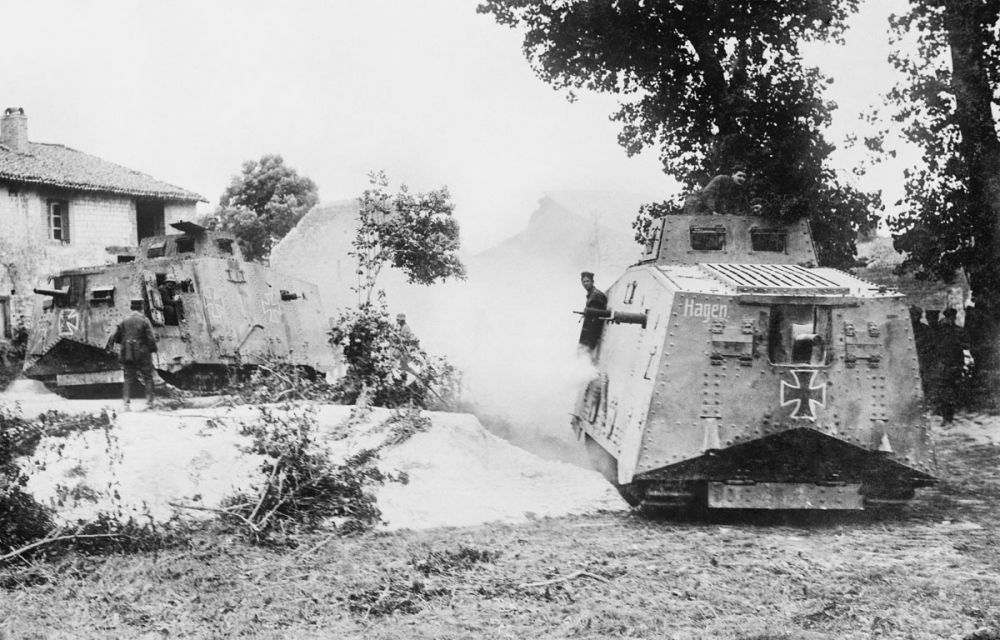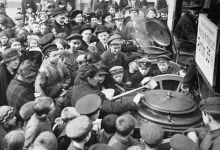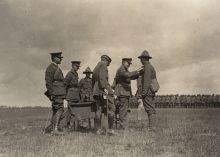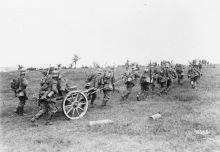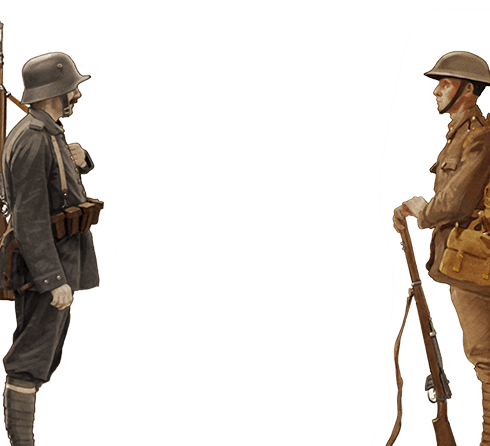Bancourt British Cemetery
You are standing in the Bancourt Commonwealth War Graves Cemetery. Just inside the entrance, there is an open area, surrounded by headstones of New Zealand soldiers who were killed in the fighting for Bancourt and Fremicourt in late August early September 1918. There are two names on every headstone and you realise that the open area that you’re standing on is a mass grave. As you look around this mass grave you’ll see other New Zealand headstones. This cemetery was started by the New Zealand Division after this attack.
Bapaume was evacuated by the Germans on 29 August and they pulled back in this direction, onto the next major junction point at Cambrai, which they were determined to hold. If you look over the memorial cross in front of you - you will see the village of Bancourt itself and directly past the stone of remembrance you will see the village of Fremicourt, to your right. If you picture the open ground between the two villages, that is the area of the Bapaume-Cambrai road. The two New Zealand Brigades, attacked in this direction, over that open ground. The 1st Rifles took on Fremicourt, and the Wellington and Auckland Battalions attacked Bancourt - coming towards you.
Zero hour was supposed to be at 5.00 in the morning, however the British on their flank were delayed and so the Aucklanders didn’t start until 6.00a.m. By that stage it was light, and the Rifle Brigade had fought their way into Fremicourt supported by tanks and taken it. However, Bancourt posed a different problem. The fighting there was difficult, and the New Zealanders once again attempted to outflank the village itself, to secure the high ground on the other side and then take control of the village. The problem was this high ground behind you, beyond the public cemetery. From there, German machine guns covered this area. Both battalions were pinned down with heavy casualties.
Look at the names on the graves. Some of these men were veterans who were private soldiers on Gallipoli and who were now sergeants or 2nd lieutenants. Up to 1915, each unit had a separate two-digit code followed by a slash and then a longer number - you can identify these veterans by these numbers. It was their leadership that got the men through this fighting. It was a different type of fighting here.
The New Zealanders were getting into open country and it was now mobile warfare. While there were still training trenches and dug-in defences around here, so much now depended on the skills of NCOs to lead their men following the loss of officers during battle. In fact there are the names of eight Auckland officers on these headstones who were killed in this fighting. At that time, the sergeants and the corporals stood up, and took over, and that cost them dearly, because they became the target for snipers and machine gun fire. That cost can be read all around you in this cemetery.
Further up the hill, Sergeant John Gilroy Grant, fought his way forward to clear a machine gun nest. That bravery won him the Victoria Cross. In fact, he was out on a limb, and the New Zealanders couldn’t hold that exposed position. They were pushed back to the ground, just in front of you, as the Germans launched a major counter attack, and for the first time, used tanks against the New Zealand positions. New Zealanders in the forward trenches had to lie doggo, while the artillery and machine guns engaged them, and the German tanks, clumsy, box-like contraptions, had to pull back.
Unfortunately for the Germans, German tanks were rare and many of their own soldiers had never seen them on the battlefield, and they were immediately engaged by their own fire. German anti-tank gunners and machine gunners, firing anti-tank rounds, forced two of the tanks to stop and they got stuck. Their crews abandoned them, and they were eventually captured by the New Zealanders.
Bancourt is an example of just how difficult an advance can be in country ideally suited for defence. The Germans tried to make the best use they could of this landscape, but they were increasingly a spent force, and the skill and experience of the New Zealanders, and the British, continued to drive them back.


